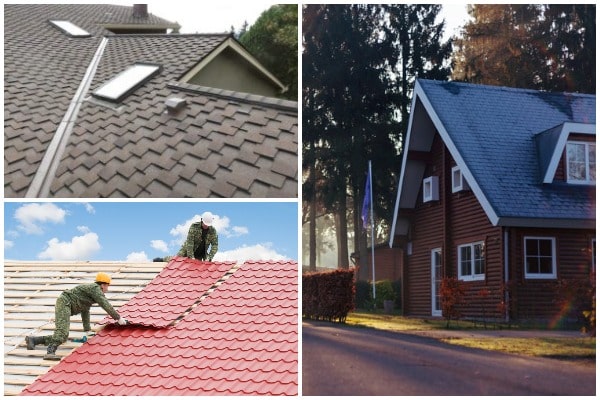Finding reliable information on the things that can damage a roof and those that won’t is surprisingly difficult. Despite what many may think, many factors affect the lifespan of your roof more than you might expect.
Some common misconceptions about what does and does not harm your roof could be incorrect. To help bring clarity to these topics, here is a list of things people often think damage their roof but which do not. By learning more about these misconceptions, you can keep your roof in good condition for years.

1. Heavy debris, such as tree branches and large pieces of wood:
Many assume that heavy debris, such as tree branches or large pieces of wood, will damage their roof. However, this is simply not true. Debris can accumulate on your roof and make it look unsightly, but it won’t affect the structural integrity of your roof in any way. Unless these objects cause a puncture or crack in the material itself, they are completely harmless to your roof’s health.
2. Strong winds:
High winds may sound like they would wreak havoc on roofs, but in reality, they don’t have much effect. Though strong gusts can cause shingles to shift slightly, they don’t typically cause any damage. Wind-resistance ratings are designed to protect your roof from gusts up to 180 mph!
3. Hail:
Like the wind, hail can sound like it would be incredibly damaging to roofs. However, quality shingles and other materials should withstand even the worst hailstorms without too much trouble. The only exception is extremely large hailstones – anything larger than 2 inches could potentially cause some damage.
4. Temperature extremes:
Extremely hot or cold temperatures can cause various problems on your roof if left unchecked for long enough periods. Still, they won’t directly damage your roof’s structure. Most roofs are designed to handle a wide range of temperatures without any issues. The only way temperature extremes can cause damage is if they lead to other problems, such as ice dams or shingle buckling.
5. Heavy snow:
It’s true that heavy snow can accumulate on your roof and cause some sagging – but it won’t directly hurt the structure of your roof itself. If you experience heavy snowfall in your area, be sure to have it removed before it builds up too much! Roof rakes are relatively inexpensive and easy to use for this purpose.
Also Read: 12 Black Gutters on House Ideas: Make Your House Stand Out!
6. Ice dams:
An ice dam is a common issue during winter months and results from melted snow running down the roof and refreezing near the edge. However, contrary to popular belief, ice dams don’t damage your roof – they cause water to back up and potentially leak into your home. To prevent ice dams from forming, it’s important to ensure your attic is properly insulated and vented.
7. Molds or moss:
Molds or moss that grow on roofs are generally considered unattractive but won’t directly cause any structural damage to a roof. In some cases, these organisms can be a sign of larger issues such as poor ventilation or drainage problems – but in general, they shouldn’t pose too much of an issue for homeowners.
8. Insects:
It’s understandable to be wary of insects that may find their way onto your roof. However, most of these are harmless and won’t cause any damage. The only exception is carpenter ants or termites – if you spot them on your roof, it’s best to contact a professional for help as soon as possible.
9. Pests:
Similarly, most pests, such as birds, squirrels, and raccoons, will be fine with your roofing material. These animals mostly nest in eaves and attics, which don’t directly interact with the roof. If they manage to make their way up top, they usually leave behind droppings that can be easily cleaned up.
Additionally, contrary to popular belief, using carpenter ants treatment on your roof won’t lead to any substantial damage. Homeowners sometimes express concern over the potential corrosive nature of these treatments, but modern solutions are designed to be safe for your property while effectively eradicating the insect problem.
10. Fire:
Surprisingly, fire won’t damage your roof either – in fact, most roofs are designed to be fire-resistant and will stand up to flames for a short period before needing to be replaced. However, it’s still important to keep combustible materials away from your roof in an emergency!
11. Sunlight:
The sun’s UV rays won’t damage your roof directly, but they can cause asphalt shingles to break down over time. To protect against this, most roofs are given a coating of reflective material which helps keep the interior of your home cooler and reduces the amount of direct sunlight on the roof itself.
12. Tree branches or leaves:
In general, tree branches and leaves won’t damage your roof in terms of structure; however, decaying foliage can lead to mold growth or clogged gutters which could cause problems down the line. Be sure to keep trees trimmed away from your house and clean out any debris that might accumulate in gutters regularly!
13. Freezing temperatures:
Despite popular belief, freezing temperatures won’t harm your roof. Many materials, such as asphalt, are designed to withstand cold weather without issues. However, freezing temperatures can make repairs difficult, so contact a professional if any major work is needed.
Final Words
In conclusion, a number of things can be perceived as harmful to your roof but won’t cause any major damage. Molds and moss, insects, pests, fire, sunlight, tree branches and leaves, wind, hail, and freezing temperatures may seem like threats to roof materials – but in reality, these generally leave behind minor dents or chips.
Taking proper care of the roofing material is key to ensuring its longevity – this means regular inspections and repairs when necessary. With the right maintenance plan in place, you can rest assured knowing your roof will remain safe and secure for years to come!